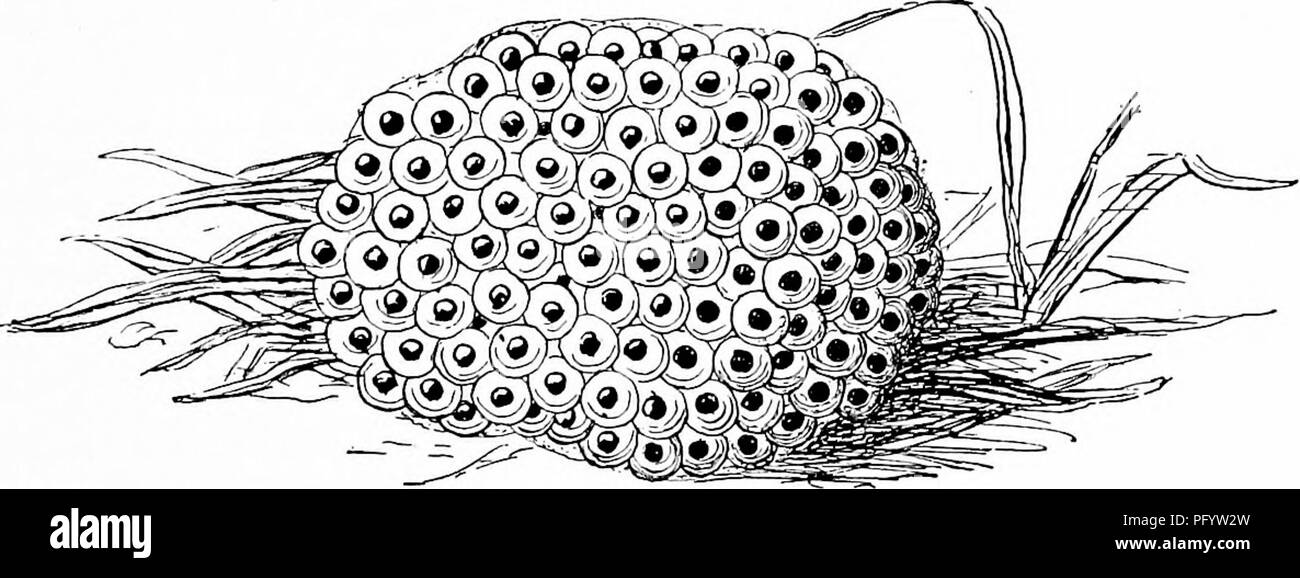. Handbook of nature-study for teachers and parents, based on the Cornell nature-study leaflets. Nature study. Batrachian Study 195 upper and lower jaws, the latter being below and back of the former. The upper jaw moves back and forth slightly and rythmically, but the drop- ping of the lower jaw opens the mouth. There are three rows of tiny black teeth below the mouth and one row above; at the sides and below these teeth are little, finger-like fringes. Fringes, rows of teeth and jaws all work together, up and down, out and in, in the process of breathing. The nostrils, although minute, are p

Image details
Contributor:
Central Historic Books / Alamy Stock PhotoImage ID:
PFYW2WFile size:
7.1 MB (367 KB Compressed download)Releases:
Model - no | Property - noDo I need a release?Dimensions:
2578 x 969 px | 21.8 x 8.2 cm | 8.6 x 3.2 inches | 300dpiMore information:
This image is a public domain image, which means either that copyright has expired in the image or the copyright holder has waived their copyright. Alamy charges you a fee for access to the high resolution copy of the image.
This image could have imperfections as it’s either historical or reportage.
. Handbook of nature-study for teachers and parents, based on the Cornell nature-study leaflets. Nature study. Batrachian Study 195 upper and lower jaws, the latter being below and back of the former. The upper jaw moves back and forth slightly and rythmically, but the drop- ping of the lower jaw opens the mouth. There are three rows of tiny black teeth below the mouth and one row above; at the sides and below these teeth are little, finger-like fringes. Fringes, rows of teeth and jaws all work together, up and down, out and in, in the process of breathing. The nostrils, although minute, are present in the tadpole in its early stages. The pupil of the eye is almost circular and the iris is usually yellow or copper-bronze, with black mottling. The eyes do not wink nor withdraw. The breathing-pore on the left side, is a hole in a slight protuberance. At first, the tadpoles of the frogs and toads are very much alike; but later, most of the frog tadpoles are lighter in color, usually being olive- green, mottled with specks of black and white. The frog tadpoles usually remain much longer than the toads in the tadpole stage, and when finally they change to adults, they are far larger in size than the toads are, when they attain their jumping legs.. Frog's eggs. LESSON XLVII The Frog Leading thought—The frog lives near or in ponds or streams. It is a powerful jumper and has a slippery body. Its eggs are laid in masses of jelly at the bottom of ponds. Method—The frog may be studied in its native situation by the pupils or it may be brought to the school and placed in an aquarium; however, to make a frog aquarium there needs to be a stick or stone projecting above the water, for the frog likes to spend part of the time entirely out of water or only partially submerged. Observations—i. Where is the frog found ? Does it live all its life in the water? When found on land how and where does it seek to escape? 2. Compare the form of the frog with that of the toad. Describe